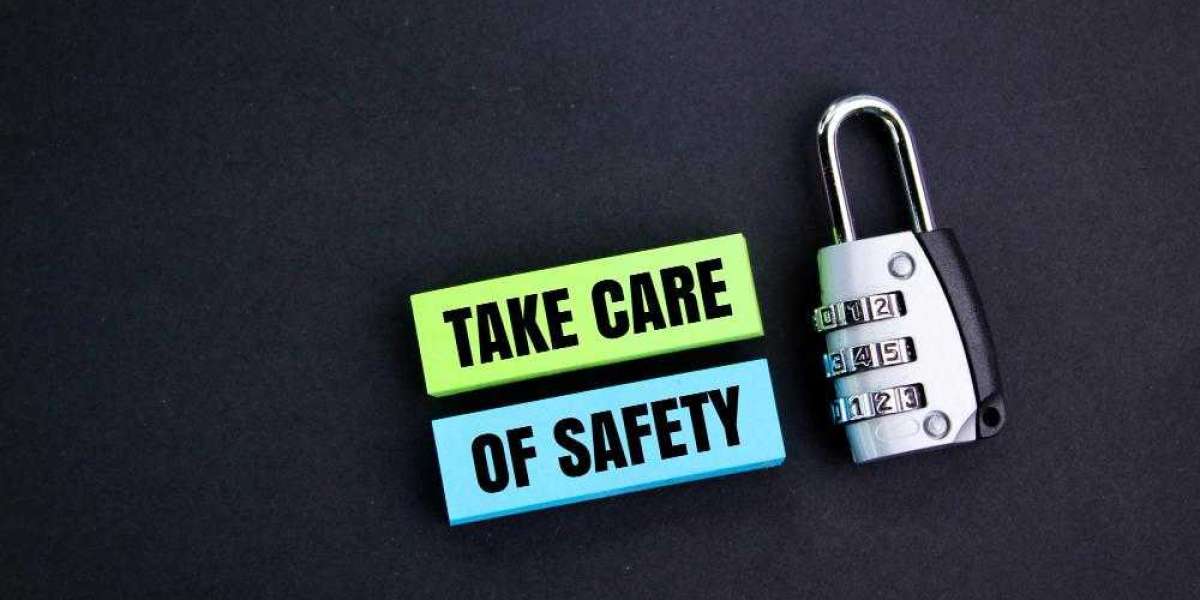Keeping your important items secure at home is crucial to protect them from potential risks. Whether it's valuable possessions, important documents, or sentimental items, ensuring their safety within your home provides peace of mind and safeguards against unforeseen circumstances. In this guide, we will delve into the various aspects of securing your belongings, from assessing risks to implementing effective security measures.
Assessing Risks:
When it comes to safeguarding your belongings at home, it's essential to consider the potential risks they may face. Theft is a common concern, especially in urban areas where burglaries can occur. It's vital to assess your home's security vulnerabilities, such as weak entry points or lack of surveillance.
Fire is another significant risk that can cause extensive damage to your property and belongings. Faulty electrical wiring, kitchen accidents, or external factors like wildfires can all pose a threat. Understanding fire prevention and having evacuation plans in place are crucial aspects of home safety.
Additionally, natural disasters such as floods, earthquakes, or storms can also jeopardize your belongings. Depending on your geographical location, you should be aware of these risks and take preventive measures accordingly, such as securing items in waterproof containers or reinforcing structures.
By identifying these common risks—be it theft, fire hazards, or natural calamities—you can proactively address security concerns and implement strategies to keep your important items safe and protected within your home.Top of Form
Safes and Lockers
Safes and lockers are essential tools for securely storing valuable items at home, providing peace of mind and protection against theft, fire, and other potential risks. Let's delve into the benefits, types, and features to consider when choosing these security solutions.

Benefits of Safes and Lockers:
The primary advantage of safes and lockers is their ability to safeguard valuable items from unauthorized access. Whether it's cash, jewellery, important documents, or digital media, these items can be securely stored within a safe or locker. This security measure not only protects against theft but also ensures confidentiality and privacy.
Types of Safes and Lockers:
- Traditional Combination Safes: These safes require a mechanical combination to open and are known for their reliability.
- Electronic Keypad Safes: These safes use a digital keypad for entry, offering convenience and quick access.
- Biometric Safes: Equipped with fingerprint recognition technology, biometric safes provide high-level security based on unique biological markers.
- Fire-Resistant Safes: Designed to withstand high temperatures, fire-resistant safes protect sensitive items from fire damage.
- Wall Safes and Floor Safes: These safes are installed within walls or floors, making them discreet and less susceptible to theft.
Features to Consider:
- Size: Choose a safe or locker that accommodates your items without being too bulky or conspicuous.
- Security Rating: Look for safes with appropriate security ratings, such as UL ratings for burglary and fire resistance.
- Fire Protection: Opt for safes with fire-resistant capabilities to safeguard documents and sensitive materials.
- Locking Mechanism: Evaluate the locking mechanism—whether it's a combination, electronic keypad, or biometric—to ensure ease of use and reliability.
- Mounting Options: Consider whether the safe can be bolted down or anchored securely to prevent theft.
By understanding the benefits, types, and key features of safes and lockers, you can make an informed decision to protect your valuable belongings effectively.
Strategic Placement:
The strategic placement of safes or lockers within your house plays a crucial role in maximizing security and preventing unauthorized access. Here are some tips on where to place them effectively:
- Choose a Secure Room: Opt for a room that is less accessible to intruders, such as a home office, bedroom, or basement with limited entry points.
- Avoid Obvious Locations: Avoid placing safes or lockers in easily visible or predictable spots, such as the master bedroom closet or under the bed.
- Consider Concealment: Conceal the safe or locker within furniture, such as a sturdy cabinet or wardrobe, to add an extra layer of security.
- Use Structural Support: If possible, install safes or lockers against load-bearing walls or floor joists for added strength and difficulty in removal.
- Utilize Wall or Floor Safes: Wall safes or floor safes can be hidden behind wall panels, under flooring, or within built-in furniture, making them less noticeable to intruders.
Hiding Spots:
In addition to strategic placement, consider hiding spots that are less obvious to intruders. These can include:
- False Wall Outlets: Install dummy wall outlets that conceal a safe or locker behind them.
- Inconspicuous Furniture: Use furniture items like false-bottom drawers, hollowed-out books, or disguised storage compartments to hide valuables.
- Secret Compartments: Explore creative solutions like hidden compartments built into walls, floors, or furniture for discreet storage.
By utilizing strategic placement and creative hiding spots, you can enhance the security of your valuables and minimize the risk of theft.
Security Measures:

While safes and lockers are essential components of home security, additional measures can further bolster your protection against intrusions and burglaries:
- Alarm Systems: Install a reliable home security alarm system that includes sensors for doors, windows, and motion detection. Alarms can deter intruders and alert authorities in case of a breach.
- Surveillance Cameras: Place surveillance cameras in strategic locations around your property, covering entry points and vulnerable areas. Modern cameras offer remote monitoring capabilities via smartphone apps.
- Smart Home Technology: Consider integrating smart home devices like smart locks, doorbell cameras, and smart lighting systems. These technologies allow remote access control and real-time monitoring of your home's security status.
- Security Lighting: Use outdoor security lighting with motion sensors to illuminate dark areas and deter potential intruders.
- Neighborhood Watch: Engage with your neighborhood watch program or community security initiatives to enhance overall safety and vigilance in your area.
By implementing these additional security measures alongside safes or lockers, you create a comprehensive security system that protects your home and valuables effectively.
Organizing Valuables:
Properly organizing your valuables within safes or lockers not only ensures their security but also facilitates easy access when needed. Here are some tips for categorizing and organizing important items:
- Prioritize Items: Identify and prioritize the most valuable or frequently accessed items that need to be stored in the safe or locker.
- Categorize by Type: Group similar items together, such as jewelry, important documents (like passports, wills, and deeds), cash, digital storage devices, and sentimental items.
- Use Containers or Dividers: Utilize containers, trays, or dividers within the safe to keep items organized and prevent them from shifting or getting mixed up.
- Labeling: Consider labeling containers or using color-coded tags to quickly identify different categories of items.
- Accessibility: Place frequently accessed items towards the front or in easily reachable areas within the safe for convenience.
By organizing your valuables systematically within the safe or locker, you can streamline access and reduce the time spent searching for specific items, enhancing overall efficiency and security.
Emergency Preparedness:
In addition to storing valuables securely, preparing for emergencies is crucial to safeguarding your important documents and belongings. Here are tips for emergency preparedness:
- Create a Home Inventory: Compile a detailed inventory of your possessions, including descriptions, photos, and serial numbers where applicable. Store this inventory digitally and keep a physical copy in a secure location.
- Backup Important Documents: Make digital copies of essential documents such as insurance policies, wills, passports, and financial records. Store these copies securely in encrypted digital storage or cloud services.
- Safe Deposit Box: Consider renting a safe deposit box at a bank for storing original copies of critical documents and irreplaceable items that you don't need regular access to.
- Fireproof and Waterproof Storage: Invest in fireproof and waterproof storage containers or safes for storing important documents and digital backups. These containers provide an added layer of protection during disasters.
- Emergency Contacts: Maintain a list of emergency contacts, including insurance providers, financial institutions, and local authorities, in case of emergencies.
By creating a home inventory, backing up important documents, and having a plan for emergencies, you can ensure that your valuables and essential information remain protected and accessible when needed most.
Maintenance and Testing:
Regular maintenance and testing of safes or lockers are essential practices to ensure their functionality and reliability over time. Here's why it's important:
- Durability: Safes and lockers are designed to withstand various threats, but they still require periodic checks to ensure that mechanisms like locks, hinges, and seals are in good condition.
- Prevention of Malfunctions: Regular maintenance helps identify and address any potential issues early, preventing malfunctions that could compromise security.
- Longevity: Proper maintenance extends the lifespan of safes or lockers, ensuring they continue to provide effective protection for your valuables.
- Security Assurance: Testing the locking mechanisms and fireproof/waterproof capabilities gives you confidence that your valuables are safe in case of emergencies.
It's recommended to follow manufacturer guidelines for maintenance intervals and procedures. Conducting periodic tests, such as checking the locking mechanism, fire resistance, and waterproofing, ensures that your safe or locker remains in optimal working condition.
Conclusion:
Safeguarding important items at home requires a multifaceted approach that includes the use of safes and lockers, strategic placement, additional security measures, organizing valuables, emergency preparedness, and regular maintenance. By implementing these security measures, you can protect your valuables from theft, fire, and other risks, providing peace of mind for you and your family.
We encourage readers to take proactive steps in securing their belongings, such as investing in quality safes or lockers, considering additional security measures like alarms and surveillance, organizing valuables systematically, preparing for emergencies with a home inventory, and conducting regular maintenance checks. These practices collectively contribute to a robust home security system that ensures the safety and protection of your important possessions.



